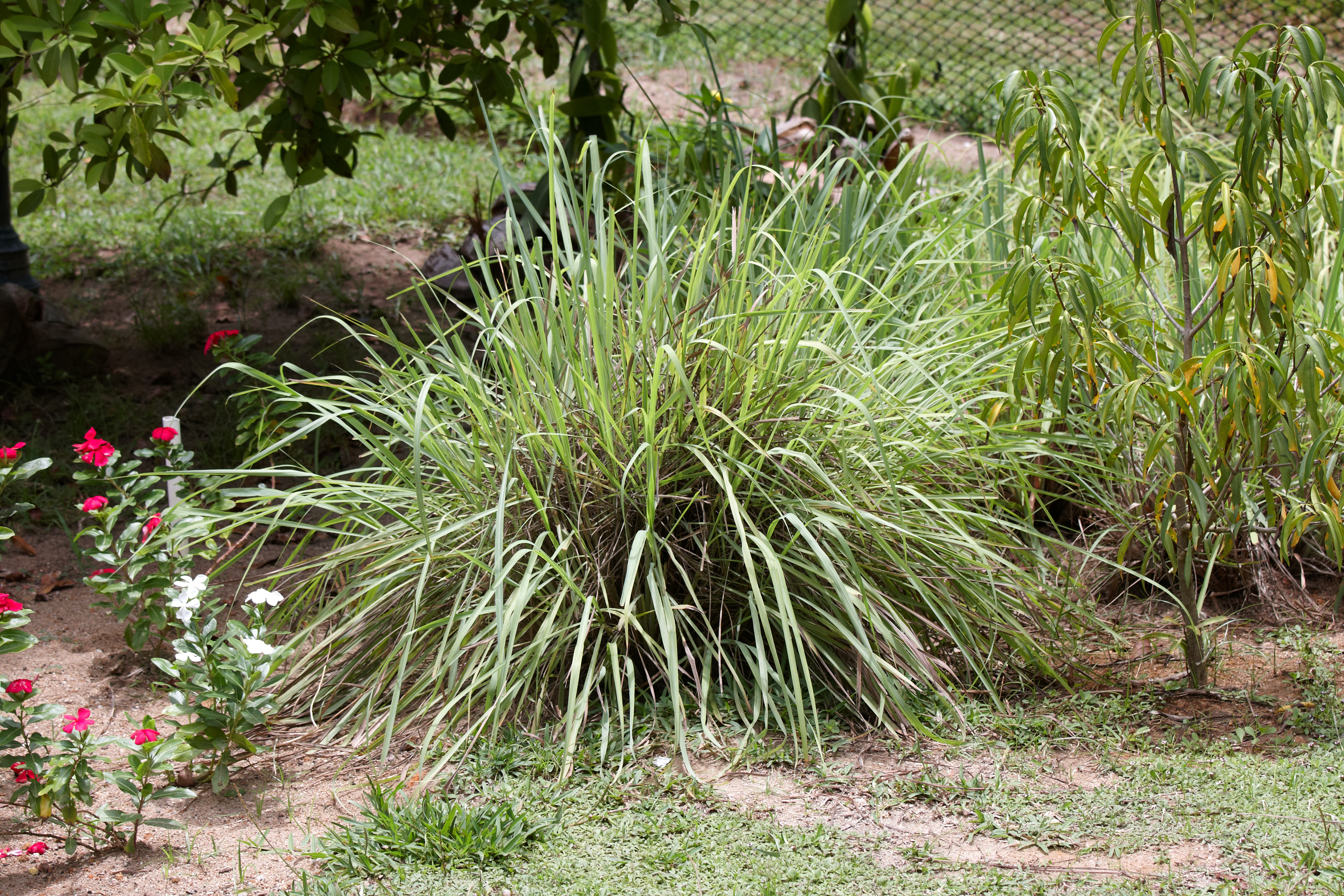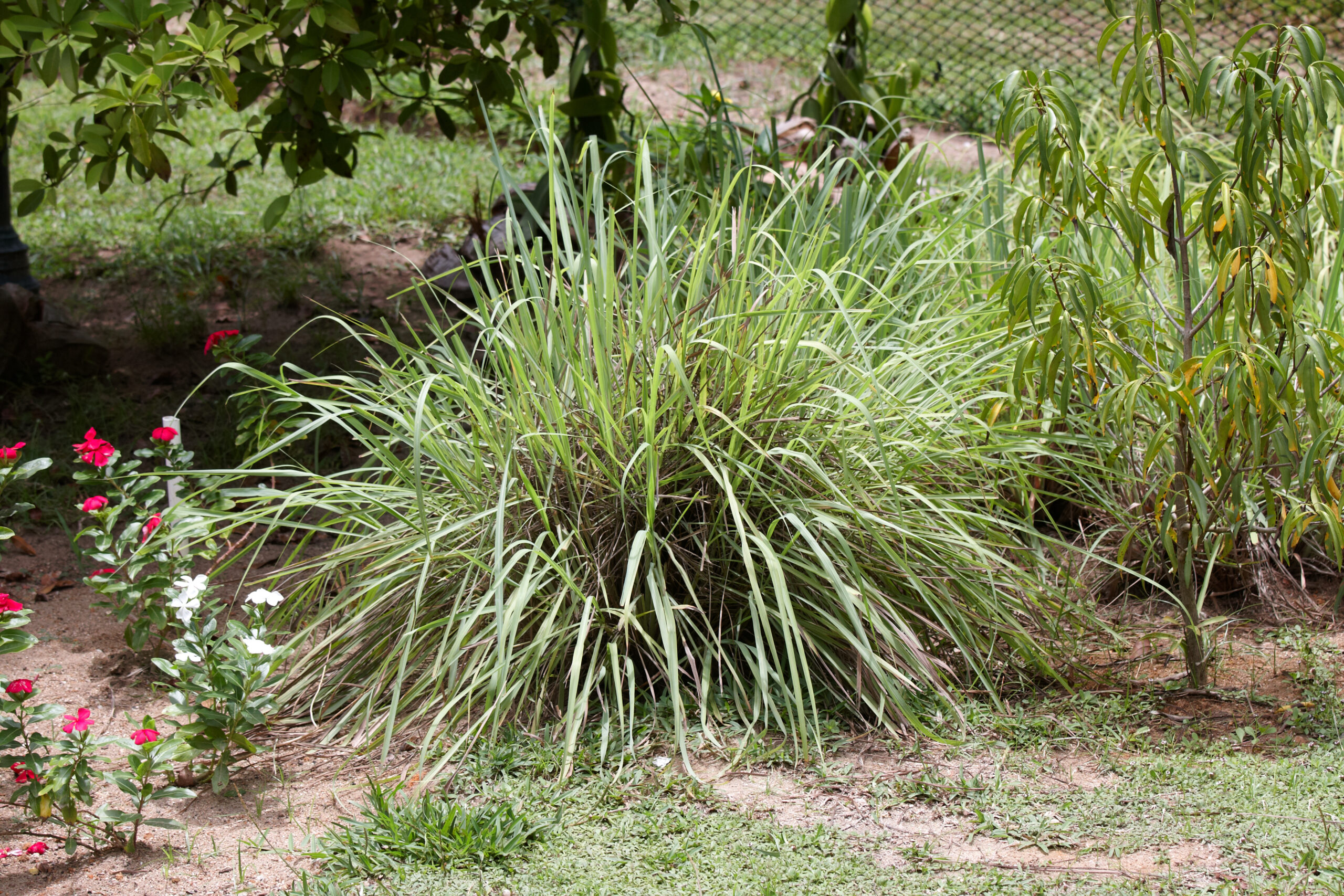Togo
Citronella
“Fever Grass” (Cymbopogon)

From https://www.istockphoto.com, visual7
General Description / Cultural Significance
Citronella (Cymbopogon species) is a tall, perennial grass known for its aromatic leaves, which release a fresh lemon or citrus scent when crushed. Growing in dense, bush-like clumps, the plant typically reaches heights of 5 to 6 feet and flourishes in warm, humid climates with abundant sunlight. Citronella is sensitive to frost and requires consistent watering along with moist, well-drained soil. The leaves are harvested several times a year to extract essential oil, which is widely valued for various applications.
In Togo, citronella holds cultural and practical significance. Herbal teas made from its leaves are commonly used to alleviate colds, respiratory infections, and other ailments, reflecting the country’s rich tradition of plant-based medicine. Citronella’s essential oil, known for its insect-repellent properties, is applied in households and on the skin to protect against mosquitoes, thus reducing the risk of malaria and other insect-borne diseases. Beyond practical use, citronella is symbolically regarded as a protector, often burned or placed at home entrances to ward off negative energy, illness, and misfortune. This practice aligns with a broader African belief in plants as protectors of health and well-being.
The primary components of citronella essential oil include citronellal, geraniol, and citronellol, which contribute to its signature lemony scent and its effectiveness as an insect repellent. These compounds also have antifungal and antibacterial properties, which contribute to the plant’s use in traditional medicine and its use in various cultural rituals in Togo. The combination of its distinctive scent, healing properties, and protective symbolism makes citronella an essential and cherished plant in Togolese communities.
Climate Change / Conservation Status
Citronella is well-suited to Togo’s climate, and although not native to the region, it is widely cultivated with minimal ecological threat. Conservation initiatives in West Africa promote sustainable harvesting to prevent overexploitation. The plant’s resilience and adaptability across tropical and subtropical climates further secure its conservation status, as it does not rely on any one specific ecosystem for survival.
Alternate Names
Fever Grass
Lemongrass
Citronella Grass
Sources
Augustyn, Adam. “Citronella Grass.” Encyclopædia Britannica, Encyclopædia Britannica, inc., 2022, www.britannica.com/plant/citronella-grass. Accessed Nov. 7 2024.
Avoseh, Opeyemi, et al. “Cymbopogon Species; Ethnopharmacology, Phytochemistry and the Pharmacological Importance.” Molecules (Basel, Switzerland), U.S. National Library of Medicine, 23 Apr. 2015, pmc.ncbi.nlm.nih.gov/articles/PMC6272507/.
“Cymbopogon Citratus.” Cymbopogon Citratus – Plant Finder, Missouri Botanical Garden, 2020,
www.missouribotanicalgarden.org/PlantFinder/PlantFinderDetails.aspx?kempercode=a504#:~:text=Cymbopogon%20citratus%2C%20commonly%20called%20lemongrass,Southeast%20Asia%20for%20that%20purpose.
Mahr, Susan. “Lemongrass, Cymbopogon Spp.” Wisconsin Horticulture, University of Madison Wisconsin, hort.extension.wisc.edu/articles/lemongrass/. Accessed 7 Nov. 2024.
Permanent Mission of the Togo to the United Nations. Togo’s statement can be found on the World Sensorium original website.


